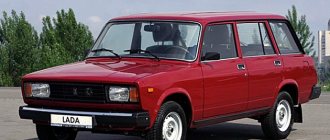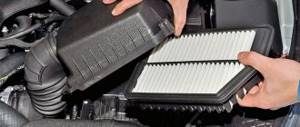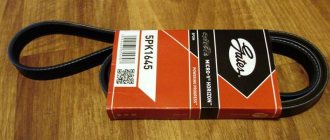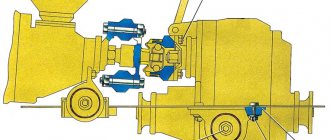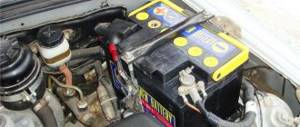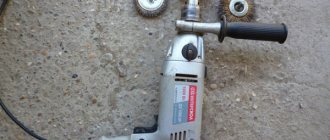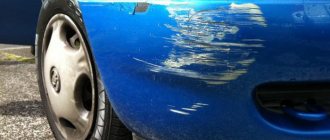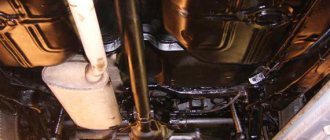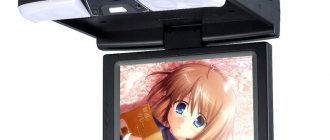Often, for various reasons, your car needs to be painted completely or partially. Car painting is quite delicate, almost jewelry work. A car enthusiast who is faced with the need to renew or repair the paint coating of the surface of his “iron friend” for the first time finds it very difficult to choose the right paint from all the variety on the market.
The automotive market is replete with enamels that differ in chemical composition, range of application and price. All enamels, regardless of type, are based on three components: pigment - a powder element that gives color and shade; a binder that helps retain pigment on the surface being painted and forms a smooth glossy surface; solvent - a thinning substance that allows paint to be applied evenly. Various physical properties of paint, such as density, hardness, elasticity, affect the protective properties of the coating.
Varieties
The history of automobile paints began a long time ago, back in the days when the car body was painted with several layers of ordinary oil paint. Since then, the paint and varnish industry has provided us with many types of enamels in beautiful packages with bright names. Today we will get acquainted with some of them:
- Acrylic. It is gradually gaining popularity among car enthusiasts due to its ease of use. It is easy to apply and holds securely; it does not need to be varnished after drying. Artificial acrylic resins included in the paint ensure the quality of the coating. Acrylic enamel is resistant to moisture and temperature changes.
- Metallic. In addition to the standard elements, this paint also contains aluminum powder, which makes the final result look very impressive. But applying this type of enamel is more difficult, which is why this type of painting costs more. Due to the aluminum content, this paint protects the body from corrosion and the color from fading.
- Pencil. It is a means of local use if you do not need full painting, but want to hide only scratches or chips on the surface of the body. Very easy to use and much cheaper than paint. It is divided into two types: wax - for removing shallow scratches and restoration touch-up marker - used to paint over scratches that have reached the primer or metal.
Paint selection
Deciding what paint to paint a car,
you should accept after visiting a car store, where experienced sales consultants will tell you everything about paints and their application.
What types of paints are most popular? Today, auto enamels are the most famous. Depending on the main component, which is called pigment, they get their color. The metallic effect is obtained by adding aluminum shavings, and the pearlescent effect is obtained by crushed mica. The most durable layer is obtained with a hardener, the grain size changes with the filler, and thickeners serve to prevent smudges and sagging.
{banner_content} Types of car paints are as follows:
- 1. Acrylic auto enamels
. The main material for their manufacture is acrylutheran and acrylic resins. They consist of two components - paint and hardener. During preparation, it is necessary to mix thoroughly with the addition of solvent. The resin becomes strong when dried. A long service life and easy paint application process are the advantages of this type, but the disadvantage is the high price and high concentration of vapors released during painting; - 2. Alkyd auto enamels
. They were very famous in Soviet times, they dry well in ventilated areas, are elastic and have a good shine. With temperature changes and adverse atmospheric influences, they quickly lose their advantages; the drying and polishing process is very long. At the moment, 50% of the sales market falls on these enamels; - 3. Nitroenamels
. In modern reality, this type of paint is not practical for use. To obtain the required quality, you have to apply up to 10 layers of paint. But they are not elastic and do not shine at all; - 4. “Mother of Pearl” and “Metallic” have become the most widespread today. When you look at a surface covered with this paint, changing the angle, you see how the shades change. The role of protection is performed by the varnish coating, which also gives depth to the painting.
Rating TOP 7 best car enamels
Since the variety is very large, and not everyone understands this issue, we took the liberty of helping car owners choose enamel and compiled a rating of the most popular ones. Now let's move on directly to the list of the best in our opinion.
- Vika 2K AK-1301.
- Duxone 2K.
- Vika ML 1110.
- Mobile metalik.
- Duxone basecoat.
- Kudo.
- Mobihel.
Below we will look at the pros and cons of each paint, characteristics and user reviews about them.
Vika 2K AK-1301
Two-component acrylic enamel produced by the Russian company “Russian Paints”. Suitable for painting metal, plastic and wooden surfaces. Large vehicles can be painted. Before using paint, the working surface must be puttied and primed (if required), and degreased (metal).
| Temperature | 15 – 20°С |
| Humidity | no more than 75% |
| Number of layers | 2 – 3 |
| Coating thickness | 35 – 40 µm |
| Number of layers | 20°С – 16 h, 60°С – 45 min, 80°С – 30 min |
| Volume | 0.85 l |
Price: 800 – 1000 rubles.
auto enamel Vika 2K AK-1301
pros
- does not drip;
- hiding power (covers well with the first layer);
- no final varnishing required;
- wide palette of colors.
Minuses
- requires complex mixing with hardener and thinner.
The paint applies tightly and evenly; a second coat is practically not required. Smoothes out minor unevenness. The color is bright and the surface is glossy, nice to look at! If the manufacturers do not spoil the quality, I will continue to use only this product.
Duxone 2K
Like the previous paint, Duxone 2 K is a two-component paint, used for painting cars, trucks and buses, and is based on an acrylic copolymer. Perfectly polished, resistant to weather conditions and various chemical influences. It is used in both partial and complete repairs.
| Volume | 1 l |
| Number of layers | 2 |
| Application temperature | 18 – 25°С |
| Layer thickness | 40 – 50 microns for two layers |
| Complete drying | 15°C – 10 hours, 20°C – 8 hours, 60°C – 10 minutes |
Price range: 1000 – 2000 rubles.
auto enamel Duxone 2 K
pros
- dries quickly (10 min);
- good hiding power (paints the surface from the first layer);
- ease of use (spreads well).
Minuses
- not found.
The first acquaintance with this product pleased me; I easily painted my old Nivushka. It became bright and shiny, like new. The paint dried quickly enough and there were no streaks left. I won’t need it for a long time myself, but I will recommend it to my friends!
Vika ML 1110
The paint is a mixture of pigments with a solution of alkyd and other resins. Used in painting various vehicles, including bicycles. The thick consistency prevents the appearance of smudges and is used in both ordinary garage and professional spray booths. Resistant to ultraviolet radiation and precipitation.
| Layers | 2 – 3 |
| Drying | 130°С – 30 min, 80°С – 1 hour, 20°С – 4 hours |
| Volume | 0.8 kg and 2 kg |
| Layer thickness | 35 – 40 microns for two layers |
| Use temperature | 15 – 20°С |
Price for 0.8 kg: 300 – 500 rubles.
The price for 2 kg is approximately 1000 rubles.
auto enamel Vika ML 1110
pros
- does not leak;
- dries quickly (30 min);
- adheres well to the surface being treated.
Minuses
- strong strong odor;
- Hardener must be added.
Good enamel, dries quickly and looks beautiful. I applied it with a spray gun with a 1.4 nozzle. There is no point in using a smaller nozzle, the paint is thick. Be sure to mix the enamel with IZUR hardener before painting, otherwise you will wait a very long time for drying.
Mobihel metalik
Enamel from the Slovenian brand MOBIHEL(HELIOS). Professional paint for car bodies and other metal structures. The main colors of this paint are used at VAZ factories in Togliatti, which confirms the quality of their production and the coincidence with the factory paint colors. After the paint has dried, it is necessary to coat the surface with acrylic varnish.
| Number of layers | 2 – 3 |
| Volume | 1 l |
| Layer thickness | 15 – 20 µm |
| Drying | 40 min |
| Working temperature | 20°C |
Approximate cost: 1000 rubles.
car enamel Mobihel metalik
pros
- the result is a durable glossy finish;
- wide color palette, easy to choose the desired shade;
- quick drying (40 min);
- durability (10 years or more).
Minuses
- contains harmful substances (n-butanol and xylene).
Excellent paint, you don’t need to select a color, you don’t have to worry about tinting, you just take the base color that matches what you need and that’s it. After varnishing, the paint looks voluminous and shiny, in general very beautiful. I recommend!
Duxone basecoat
A one-component mixture based on acrylic polymer, it is a base coat and combines ease of application, good drying speed and precise color matching.
| Number of layers | 2 – 3 |
| Thickness | 10 – 20 µm |
| Temperature | 18 – 20°С |
| Volume | 1 l |
| Drying speed | 60°C – 30 min |
Cost: 1500 rubles.
car enamel Duxone basecoat
pros
- strength;
- quick drying (30 min);
- stands color.
Minuses
- No.
The paint is completely worth its price! Without unnecessary pain and loss of time I covered the hood of my “swallow”, now it sparkles, and I’m happy and sparkling with pleasure.
Kudo
Universal enamel based on pentaerythritol phthalate resins in an aerosol can. It is used for painting bodies mainly of passenger cars and well-cleaned and primed wooden surfaces. Thanks to the sprayer, it is easy to apply in hard-to-reach places.
| Volume | 520 ml |
| Complete drying | 5 hours |
| Use temperature | 20 – 25°С |
| Layers | 2 – 3 |
Estimated cost: 150 – 300 rubles.
auto enamel Kudo
pros
- Ease of use;
- does not leave streaks;
- good adhesion to the surface.
Minuses
- unpleasant smell.
I decided to update my motorcycle, read a lot about paints, thought a lot and chose Kudo. What can I say. Everything is great, the colors look great, and it’s convenient to use. It is only advisable to work in a room closed from the wind and it is better to wear a respirator. In principle, I am satisfied, there are no complaints about the paint.
Mobihel
Pencil with high-quality enamel, designed for masking (painting over) scratches and chips on the varnished surface of a car. Like paint, the pencil has the function of protecting against adverse weather conditions and metal corrosion.
| Drying time | 5 – 10 min |
| Temperature | 15 – 20°С |
| Weight | 0.12 g |
| Number of layers | 2 – 3 |
The cost is just over 100 rubles.
auto enamel Mobihel
pros
- compact size and light weight (0.12 g);
- ease of use;
- quick drying (5 – 10 min).
Minuses
- not detected.
The camping version of the enamel really helps to maintain the appearance of newness of the car; only I know about all the scratches. I bought it on the advice of friends and don’t regret it, I gave it a penny, and now it helps me out all the time. I highly recommend it, I think every driver should have such a thing!
Types of car paints, history of creation
joomla templates job search android game news gaming news
The selection of car paint has a number of features that originate in the specific origin and classification of car enamels. To understand which car paint is better and why, let's start with terminology.
Color is a subjective characteristic of electromagnetic radiation in the optical range. It has certain parameters, its perception is individual.
Paint is a general name for colored dyes.
Varnish is a solution of organic polymers, artificially synthesized or of natural origin (resins), in various solvents or water. When cured, it forms a transparent film.
Pigment is a component of paint that gives it a certain color.
comparison table
In the table below, we have compared all the important parameters of each specimen examined. Here you can compare the characteristics and choose what you like.
| Model | Number of layers (pcs) | Price (rubles) | Drying time (min) | Operating temperature (°C) | Volume/Weight (liter/kg) | Layer thickness (µm) |
| Vika 2K AK-1301 | 2 – 3 | 800 – 1000 | 20°С – 960, 60°С – 45, 80°С – 30 | 15 – 20 | 0,85 | 35 – 40 |
| Duxone 2K | 2 | 1000 – 2000 | 15°С – 600, 20°С – 480, 60°С – 10 | 18 – 25 | 1 | 20 – 25 |
| Vika ML 1110 | 2 – 3 | 300 – 500 and 1000 | 130°С – 30, 80°С – 60, 20°С – 240 | 15 – 20 | 0.8 and 2 | 17,5 – 20 |
| Mobihel metalik | 2 – 3 | 1000 | 40 | 20 | 1 | 15 – 20 |
| Duxone basecoat | 2 – 3 | 1500 | 60°C – 30 min | 18 -20 | 1 | 10 – 20 |
| Kudo | 2 – 3 | 150 – 300 | 200 | 20 – 25 | 0,52 | no data |
| Mobihel | 2 – 3 | just over 100 | 5 – 10 | 15 – 20 | 0,12 | no data |
Alkyd paint
Characteristics, properties
Alkyd paint is nothing more than a derivative of alkyd resin. Since the substance has an oily structure, alkyd paint is essentially an improved version of oil paint. She is similar to her even in her characteristics. For example, an alkyd composition has a similar process of hardening and film formation on the treated surface. By the way, this film is much more durable than in oil products, but is less flexible.
The basis of the alkyd product is polyhydric alcohols paired with orthophthalic acid. Even the word “alkyd” is a derivative of the words “alcohol” and “acid”. Over the decades of its use, the alkyd coloring composition has managed to prove itself in the best possible way. Its main purpose is to quickly update car bodies due to the ease of application of the substance and a rich color palette.
Alkyd paint polymerizes quickly and does not require multiple applications to achieve the desired effect, but before applying the composition, careful preparation of the working surface is required. It should be borne in mind that drying speed is both an advantage and a weak point of an alkyd product. The problem is that almost instantaneous setting of the paint implies the appearance of a thin film, which does not always allow the alkyd layer to dry evenly and quickly.
Alkyd paints are widely used in construction: for both exterior and interior work. Can be safely applied to wood and metal surfaces. For cars, alkyd is used infrequently and not for painting the entire structure, since then an additional layer of varnish will be required, which will also have to be polished.
There are also special matte alkyd compositions used as a decorative coating for elements that do not require polishing, or for repairing individual elements before varnishing them.
Advantages and subtleties of application
Alkyd products have undeniable advantages. Among the main features of the product are:
- Good resistance to external influences;
- Water resistance;
- Quick drying;
- Protection of metal from corrosion;
- Low price.
Working with alkyd enamel is not difficult; even a non-professional can apply it to the surface: a standard roller or paint brush is enough. True, there are a couple of nuances. Firstly, alkyd paint is considered a fire hazard, so there should be no open fire near the work being carried out.
And, secondly, the dye has a sharp, unpleasant, toxic odor. Alkyds are dangerous for humans, so you should work with them after first taking care to protect your respiratory tract - a respirator is required.
Best lists
In addition to the names mentioned above, I would like to take a closer look at three types of auto enamels and highlight one more representative of paint and varnish materials in each of them. So:
- acrylic;
- metallic;
- pencil.
Let's move on to the details.
Acrylic
Reoflex Acryl Filler , a domestically produced two-component acrylic enamel, is resistant to various solvents. It has strong insulating properties and good filling properties.
| Temperature | 15 – 30°С |
| Layer thickness | 60 – 200 µm |
| Number of layers | 2 – 3 |
| Drying | 80°С – 15 min, 60°С – 30 min, 20°С – 3 h |
Approximate price: 360 rubles.
car enamel Reoflex Acryl Filler
Metallic
Colomix base metallic is the base coat in a two-layer paint system for cars, buses, trucks and other metal products. Provides easy application and quick drying.
| Volume | 1 l |
| Layer thickness | 15 – 20 µm |
| Number of layers | 2 – 3 |
| Drying time | 20°C – 20 min |
Approximate cost: 1700 – 2000 rubles.
Colomix auto enamel
Pencil
CarPlan T-cut is a polish for filling out scratches on paint surfaces. Increased wax content will provide better protection and a radiant shine.
| Volume | 500 ml |
| Drying time | 15 – 40 min |
| Application temperature | 20 – 25°С |
Price: 350 rubles.
car enamel CarPlan T-cut
History of natural paint.
In English there are several words for protective and decorative coatings: “paint”, “varnish”, “lacquer”. But it is “lacquer” that tells the most about the history of paints.
The term "lacquer" comes from the Indian Sanskrit word "laksa", which literally means "one hundred thousand". It refers to varnish bugs, insects that live in thousands on trees in the tropics and subtropics. The females of these insects secrete special hardening resins. This resin can be heat released and placed on other surfaces before it hardens again. In this way, shellac is obtained (used to produce varnish, produced by the scale insects Laccifer lacca), carmine (cinnabar, a red dye, extracted from cochineal females).
However, the earliest examples of paints, dating back to the 16th millennium BC, were made from a mixture of animal fat and natural pigments (ochre, manganese ore, iron oxide, chalk). Synthetic components were first used by the Egyptians (gelatin, wax).
More serious work with varnish originates in China. The oldest painted furniture and vases date back to 200 BC. When Marco Polo landed in China in 1271, the art of lacquer was already a 2,000-year-old tradition. The Chinese obtained their varnish from the sap of the lacquer tree. To add color, soot and cinnabar were added to it.
What to look for when choosing
Choosing the enamel for your car yourself is a very labor-intensive process; it will take a lot of time and nerves, because there are a great many shades of paint and which one will suit your vehicle is still a big question. In general, this is done in specialized laboratories, but if you set out to go through all the “circles of hell” on your own, then be patient. There is a specific code by which you can determine the color you need. This code is located somewhere on the inside of your car body. Having found it, you can go in search of paint, perhaps you will be lucky and immediately find the one you need, or perhaps you will need tinting.
When choosing the paint itself, you need to pay attention to its properties, for example, protection from the sun or moisture; the more useful qualities it has, the better. Be sure to look at the instructions on how to apply paint, in what quantity, what special equipment or tools to use, so you will understand whether you can do it all yourself.
Acrylic based paints
If you are wondering what paint is best to paint a car so that the coating dries as quickly as possible, pay attention to acrylic enamels. This type of paint creates a durable, uniform layer with high-quality shine. Acrylic coatings harden quickly and become resistant to mechanical damage and solvents.
The main disadvantage of acrylic paints is their low coverage. Therefore, to achieve maximum effect, enamel should be applied in several layers. At the same time, acrylic paint does not require subsequent application of varnish.
If you need the best car paint, with which you can get a perfectly smooth surface and deep color, choose acrylic auto enamel and cover it with two layers of varnish.
Which paint is better - alkyd or acrylic?
It all depends on the scope of application. For example, if we are talking about painting external wooden structures, then an alkyd mixture is considered the best choice, since its properties allow it to be used for treating those elements that experience increased stress. This is a good option for finishing the entrance group or railings on a wooden staircase.
As for acrylic material, it is a suitable option for interior decoration; it can even be used in a children's room.
If we talk about painting cars, acrylic enamel is also the best coating because it gives the surface a more attractive appearance. But if the financial factor plays an important role for the motorist, then an alkyd mixture can also be used - it costs less, dries quickly, and can be applied in one layer (of greater thickness).
